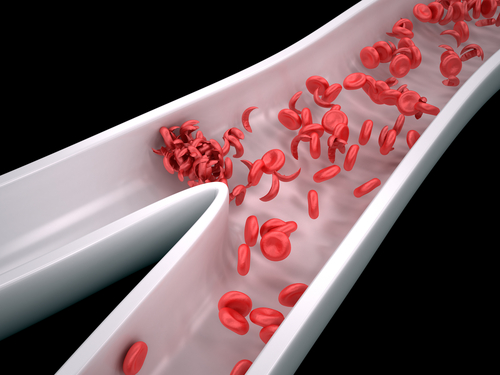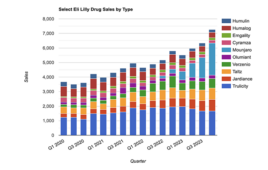 Treatment for painful episodes of blood vessel obstruction in sickle cell anemia is currently limited to controlling pain, but an investigational therapy might be able to interfere with the underlying cause of these events, known as vaso-occlusion crises, researchers at Duke Medicine report.
Treatment for painful episodes of blood vessel obstruction in sickle cell anemia is currently limited to controlling pain, but an investigational therapy might be able to interfere with the underlying cause of these events, known as vaso-occlusion crises, researchers at Duke Medicine report.In a small, multicenter patient study led by Marilyn J. Telen, M.D., Wellcome Professor of Medicine in the division of hematology at Duke University Medical School, patients who received an investigational drug had quicker resolution of the pain episode, although the difference compared to a control group did not rise to statistical significance.
Telen said the study’s small size, as well as the wide variability in the length of time that all of the study patients suffered painful vascular obstruction, contributed to the statistical draw. A larger, international study is planned to begin later this year to provide greater clarity.
Patients who received the investigational drug also used far less pain medication, which was self-administered. Those findings were statistically significant.
The findings were reported online in the journal Blood.
“We have not had good therapies for people with this disease,” Telen said. “But this approach shows more promise than anything else I’ve seen in 34 years of treating sickle cell disease.”
Sickle cell anemia is a genetic condition in which some of the red blood cells are stiff and shaped like crescents, or sickles, rather than smooth and round. The abnormal blood cells can build up and block blood flow to limbs and organs, causing severe pain and organ damage.
The National Heart, Lung, and Blood Institute estimates that up to 100,000 people in the United States, primarily African-Americans, have the disease. The disease affects millions of people throughout the world, and causes more than 75,000 hospitalizations a year in the United States, which accounts for $1 billion in annual U.S. medical costs.
Telen said the current standard of care is pain control, typically with opioids, and patients can be hospitalized for days or weeks. Enrolling 76 patients from 17 sites in the United States, the study randomly assigned patients to receive either a placebo or the investigational drug, dubbed GMI-1070, or rivipansel. All patients also received the standard treatment for pain and symptom management.
The drug is designed to prevent cells from sticking together and thereby improve blood flow. For study participants who received the investigational drug, the effects tended to begin within 24 hours, and their painful crisis passed sooner than those receiving only treatment for pain, but the statistical difference was not significant.
The researchers said the improvements seen in the amount of time to resolution would likely be clinically meaningful if they were verified in a larger trial.
Study authors also said the findings demonstrating lower use of pain medication among patients was a critical step forward.
“The difference in pain medication use was statistically significant, and it occurred in the first 24 hours, which implies that the therapy may be interfering with the mechanism of the vaso-occlusion,” Telen said. “For these patients, having less pain is very important.”
Telen said the larger study is planned to begin later this year, with a goal of enrolling more than 300 patients.
Source: Duke University
Filed Under: Drug Discovery




